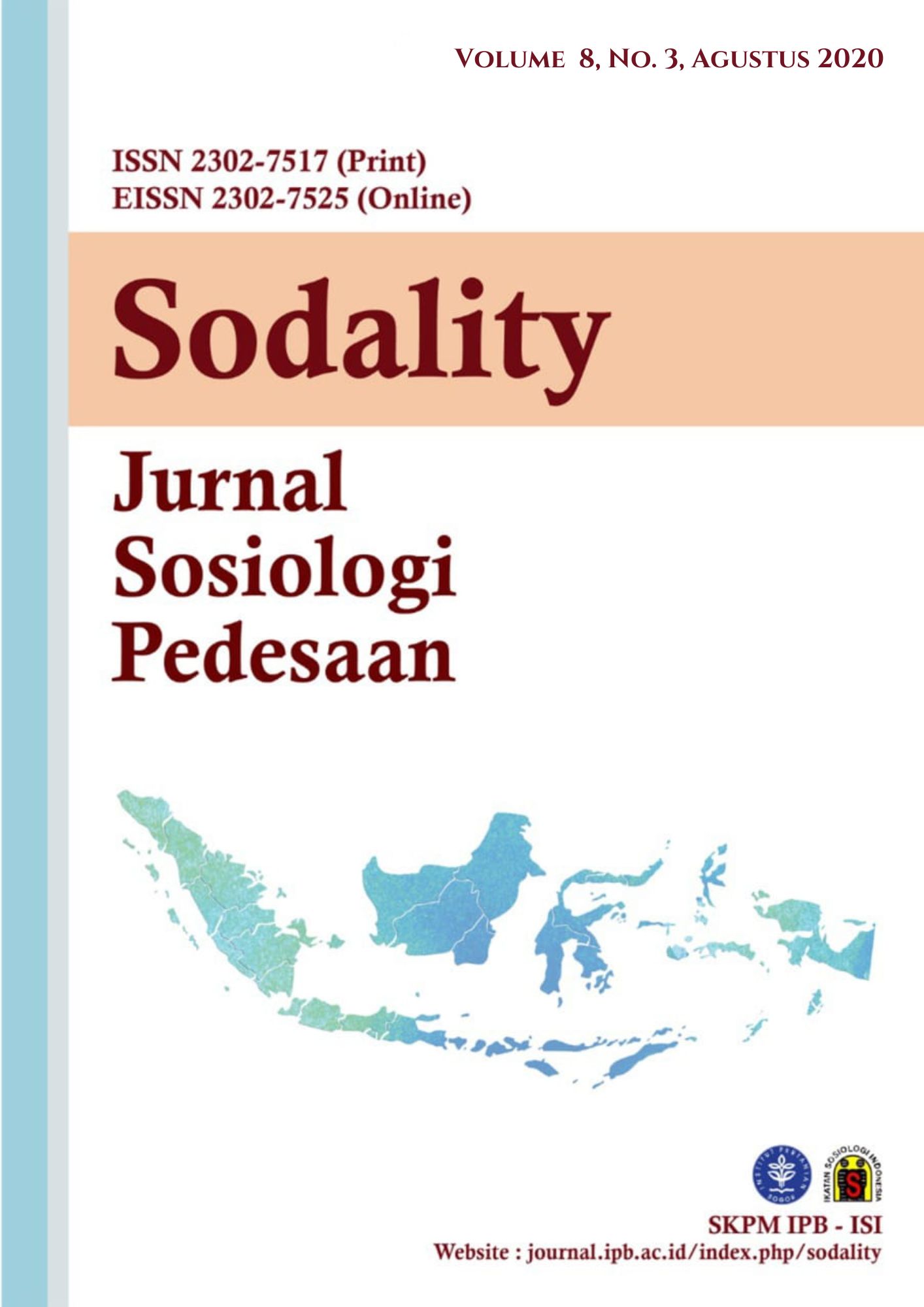Population, Migration and Climate Change
Abstract
The objective of this research is to explain how climate change affects and is affected by population growth and migration. The global analysis will then be followed by a specific study in Indonesia on the relation between population migration and natural disaster events. The research method used a secondary data analysis based on literature review, the 2015 Inter-Census Population Survey (SUPAS) data and 2013 disaster data. To reduce greenhouse gas emissions and ensure the sustainability of the planet's earth, there are three things that should be done, namely to reduce the pace of population growth, to change the pattern of consumption of natural resources, and to increase Earth's carrying capacity by using technologies and innovations. Migration is mostly caused by economic needs, while migration due to disaster events is very small. Migration data records permanent migration type, while the disaster-affected population usually migrates on the temporary bases. The BPS-Statistics Indonesia and the National Disaster Management Authority should have some agreement on defining disasters, including climate change induced-disasters, and on how to collect and store data on the number of people impacted by each of them.
References
Adamo, B. S. (2011). Slow-onset hazards and population displacement in the context of climate change.
Badan Nasional Penanggulangan Bencana. (2014). Indeks Risiko Bencana Indonesia Tahun 2013. In BNPB.
Baldwin, A. (2017). Climate change, migration, and the crisis of humanism. Wiley Interdisciplinary Reviews: Climate Change. https://doi.org/10.1002/wcc.460
Bardsley, D. K., & Hugo, G. J. (2010). Migration and climate change: Examining thresholds of change to guide effective adaptation decision-making. Population and Environment. https://doi.org/10.1007/s11111-010-0126-9
Brown, O. (2007). Human Development Report 2007 / 2008 Climate change and forced migration : Observations, projections and implications. Human Development.
De Haas, H. (2010). Migration and development: A theoretical perspective. International Migration Review, 44(1), 227–264. https://doi.org/10.1111/j.1747-7379.2009.00804.x
Dover, S., & Butler, C. (2015). Population and Environment: a global challenge. Australia Academy of Science.
Hugo, G. (2011). Future demographic change and its interactions with migration and climate change. Global Environmental Change, 21(1), 21–33. https://doi.org/10.1016/j.gloenvcha.2011.09.008
IDMC. (2017). Global Report on Internal Displacement. Norwegian Refugee Council (NRC).
IPCC. (2007). Climate Change 2007: Synthesis Report. Contribution of Working Groups I, II, and III to the Fourth Assessment Report of the Intergovernmental Panel on Climate Chang.
IPCC. (2014). Climate Change 2014: Synthesis Report. Contribution of Working Groups I, II, and III to the Fifth Assessment Report of the Intergovernmental Panel on Climate Change.
Islam, M. R., & Shamsuddoha, M. (2017). Socioeconomic consequences of climate induced human displacement and migration in Bangladesh. International Sociology, 32(3), 277–298. https://doi.org/10.1177/0268580917693173
Jha, C. K., Gupta, V., Chattopadhyay, U., & Amarayil Sreeraman, B. (2018). Migration as adaptation strategy to cope with climate change: A study of farmers’ migration in rural India. International Journal of Climate Change Strategies and Management, 10(1), 121–141. https://doi.org/10.1108/IJCCSM-03-2017-0059
Mbaye, L. (2017). Climate change, natural disasters, and migration. IZA World of Labor. https://doi.org/10.15185/izawol.346
McAdam, J., & Ferris, E. (2015). Planned relocations in the context of climate change: Unpacking the legal and conceptual issues. Cambridge International Law Journal, 4(1), 166–137. https://doi.org/10.7574/cjicl.04.01.137
Mortreux, C., & Barnett, J. (2009). Climate change, migration and adaptation in Funafuti, Tuvalu. Global Environmental Change. https://doi.org/10.1016/j.gloenvcha.2008.09.006
Murtaugh, P. A., & Schlax, M. G. (2009). Reproduction and the carbon legacies of individuals. Global Environmental Change. https://doi.org/10.1016/j.gloenvcha.2008.10.007
Naik, A. (2009). Migration and Natural Disasters. In F. L. and C. Aghazarm (Ed.), Migration, Environment, and Climate Change: Assessing the Evidence (pp. 245–318). International Organization for Migration.
Oliveira, J., & Pereda, P. (2020). The impact of climate change on internal migration in Brazil. Journal of Environmental Economics and Management. https://doi.org/10.1016/j.jeem.2020.102340
Piguet, E., Pécoud, A., & de Guchteneire, P. (2011). Migration and climate change: An overview. Refugee Survey Quarterly. https://doi.org/10.1093/rsq/hdr006
Population Action. (2010). Climate Change, Migration, and Population Growth.
Rigaud, K. K., de Sherbinin, A., Jones, B., Bergmann, J., Clement, V., Ober, K., Schewe, J., Adamo, S., McCusker, B., Heuser, S., & Midgley, A. (2018). Groundswell - Preparing for internal climate migration. Washington, DC: The World Bank. https://doi.org/doi.org/10.7916/D8Z33FNS
Stephenson, J., Newman, K., & Mayhew, S. (2010). Population dynamics and climate change: What are the links? Journal of Public Health, 32(2), 150–156. https://doi.org/10.1093/pubmed/fdq038
Tacoli, C. (2009). Crisis or adaptation? Migration and climate change in a context of high mobility. Environment and Urbanization, 21(2), 513–525. https://doi.org/10.1177/0956247809342182
Waldinger, M. (2015). The effects of climate change on internal and international migration: implications for developing countries (No. 217).
Waldinger, M., & Fankhauser, S. (2015). Climate chamge and migration in developing countries: evidence and implication for PRISE countries. ESRC Centre for Climate Change Economics and Policy.
Authors who publish with this journal agree to the following terms:
- Authors retain copyright and grant the journal right of first publication with the work simultaneously licensed under a

This work is licensed under a Creative Commons Attribution 4.0 International License. that allows others to share the work with an acknowledgement of the work's authorship and initial publication in this journal. - Authors are able to enter into separate, additional contractual arrangements for the non-exclusive distribution of the journal's published version of the work (e.g., post it to an institutional repository or publish it in a book), with an acknowledgement of its initial publication in this journal.
- Authors are permitted and encouraged to post their work online (e.g., in institutional repositories or on their website) prior to and during the submission process, as it can lead to productive exchanges, as well as earlier and greater citation of published work (See The Effect of Open Access).





.png)









